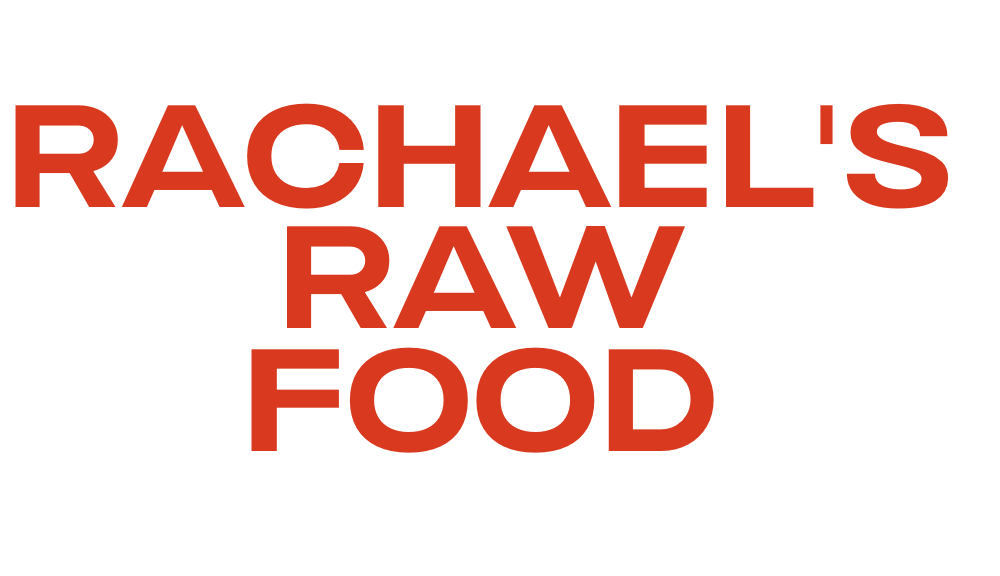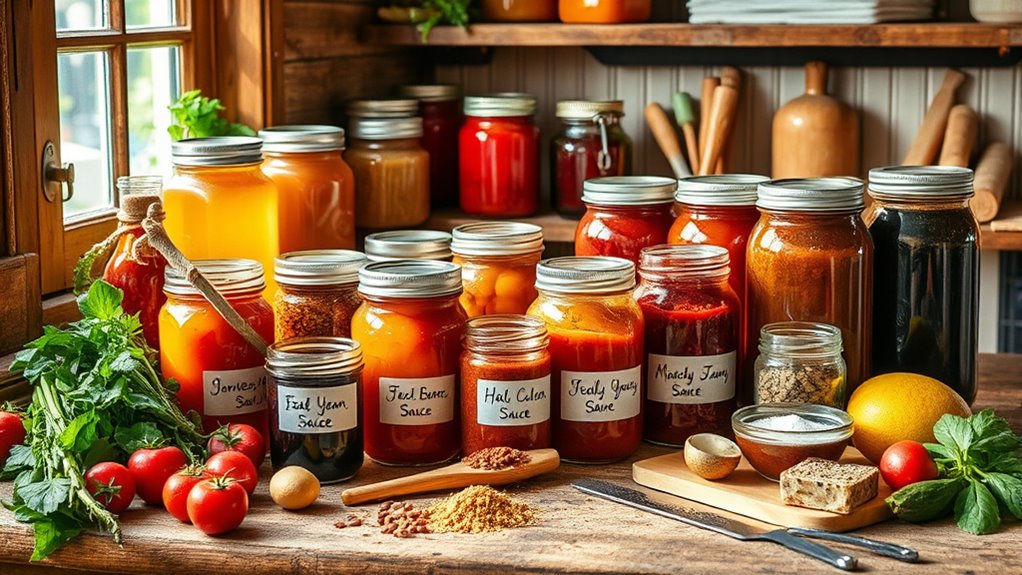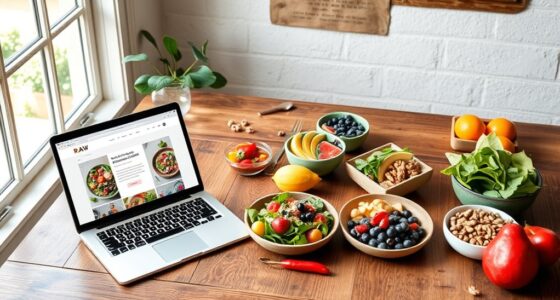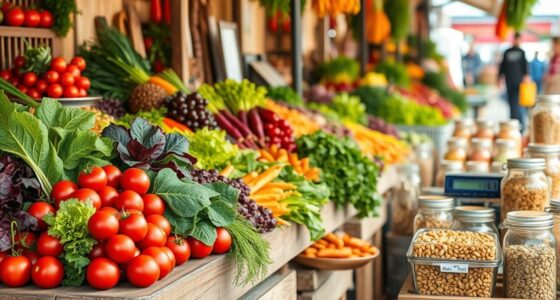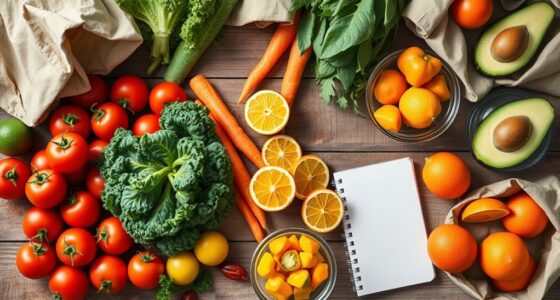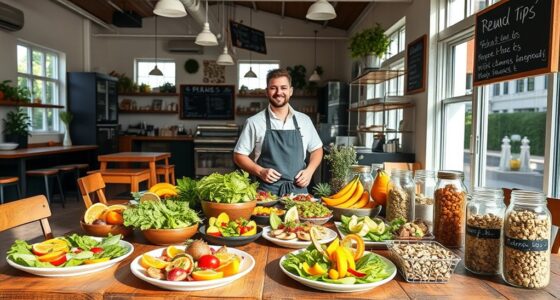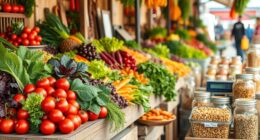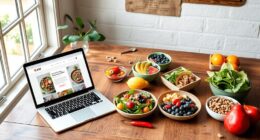To turn your raw recipes into a successful product line, focus on creating a strong brand story that resonates with your target audience. Design packaging that is attractive, functional, and eco-friendly, reflecting your brand’s values. Consistency in your visual identity and messaging builds trust and loyalty. Incorporate sustainability to appeal to conscious consumers. If you keep exploring, you’ll discover more about transforming your kitchen experiments into market-ready products.
Key Takeaways
- Develop a strong branding strategy that highlights your product’s unique selling points and resonates with your target audience.
- Design packaging that is attractive, functional, and aligns with your brand story, ensuring it protects and communicates your product effectively.
- Incorporate sustainable packaging options to appeal to eco-conscious consumers and enhance your brand’s reputation.
- Test different packaging designs and gather feedback to optimize appeal, usability, and brand consistency.
- Ensure your packaging complies with legal labeling requirements and clearly communicates your product’s quality and values.
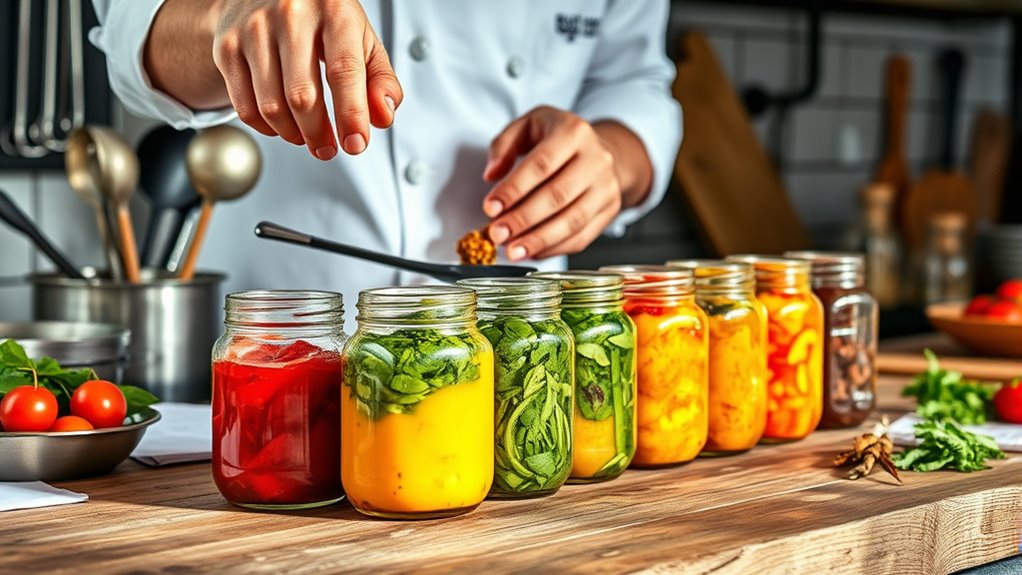
Transforming your raw recipes into a successful product line can be both exciting and challenging. It’s the moment when your kitchen experiments turn into tangible products that can reach customers. But before you plunge into production, you need a clear branding strategy. Your branding isn’t just about a logo or a catchy name; it’s about creating a story that resonates with your target audience. Think about what makes your recipes unique and how you want your brand to be perceived. Are you emphasizing health, tradition, indulgence, or sustainability? Your branding strategy guides every decision, from packaging to marketing. It helps establish a consistent voice and visual identity that sets you apart in the marketplace.
Creating a strong brand story is key to turning recipes into a successful market presence.
Once you have a strong brand foundation, focus on packaging design. Your packaging is often the first thing a customer notices, so it needs to be eye-catching, informative, and aligned with your brand. Good packaging design communicates what your product is and why it’s special. Use colors, fonts, and imagery that reflect your brand’s personality and attract your ideal customers. For example, if you’re selling organic jams, earthy tones and natural textures might work best. If you’re offering gourmet chocolates, sleek, modern packaging could appeal more. Remember, packaging isn’t just about aesthetics; it must also protect your product, comply with labeling laws, and include essential information like ingredients and expiry dates.
As you develop your packaging, consider sustainability. Eco-friendly options can enhance your brand’s reputation and appeal to environmentally conscious consumers. Recyclable materials, minimal packaging, and clear communication about your sustainability efforts can make a significant difference. Keep in mind that packaging design should also consider functionality—easy to open, resealable, and convenient for your customers. Test different designs, gather feedback, and refine until you find the right balance between attractiveness and practicality. Incorporating natural materials into your packaging can further emphasize your brand’s commitment to authenticity and quality.
Building your brand and designing your packaging go hand in hand. Your packaging should reflect your brand’s story and values, creating a cohesive experience for your customers. When done thoughtfully, it helps build trust and loyalty. As you move from kitchen experiments to a market-ready product, remember that every detail counts—your branding strategy and packaging design are the first impressions that will help turn your recipes into a thriving product line. Keep your focus sharp, stay authentic, and be prepared to adapt as you grow.
Frequently Asked Questions
How Do I Price My Products Competitively?
You want to price your products competitively, so start with solid pricing strategies and conduct a thorough market analysis. Research what competitors charge and determine your costs, including ingredients and packaging. Use this info to set a price that appeals to customers while ensuring profitability. Adjust your pricing based on demand, quality, and unique selling points, always keeping an eye on the market trends to stay competitive and attract buyers.
What Legal Licenses Are Required for Food Products?
You need to check local and federal food safety regulations and obtain necessary licenses, like a food establishment permit or a cottage food license. Make sure you understand labeling requirements, including ingredients, allergens, and expiration dates. These licenses guarantee your products are safe for consumers and compliant with laws. Failing to meet these legal requirements can lead to fines or product recalls, so stay informed and follow all regulations carefully.
How Can I Protect My Recipes From Being Copied?
To protect your recipes from being copied, focus on maintaining recipe confidentiality by limiting access and sharing only with trusted partners. You can also explore intellectual property protections like trade secrets or copyrighting specific recipe elements. Keep detailed records of your creations, and consider consulting an attorney to develop legal strategies that safeguard your unique formulations, ensuring your culinary innovations stay exclusively yours.
What Packaging Options Are Best for Shelf Stability?
Perfect packaging provides powerful protection, prolonging product freshness and preserving your recipe’s integrity. For shelf stability, consider vacuum-sealed bags, airtight jars, or tamper-proof pouches that prevent spoilage and ensure safety. Your packaging design should be durable and distinctive, blending beauty with barrier qualities. This combination guarantees longer shelf life preservation, secures your product’s quality, and creates an engaging display that draws customers in, confidently conveying your commitment to quality.
How Do I Find Reliable Suppliers for Ingredients?
When you’re sourcing ingredients, prioritize supplier sourcing that focuses on ingredient quality to guarantee your products meet standards. Research reputable suppliers online, ask for references, and request samples to assess quality firsthand. Attend industry trade shows or join relevant groups to connect with trusted vendors. Building relationships with reliable suppliers helps maintain consistency in your ingredients, ultimately supporting your product’s success and customer satisfaction.
Conclusion
Turning your raw recipes into a product line isn’t just a dream—it’s your next achievement. With passion, planning, and perseverance, you’ll transform your kitchen creations into market-ready delights. Remember, every great brand started with a single idea, just like yours. So, take that leap—because your recipes deserve to be shared with the world. Embrace the journey, and watch your culinary vision turn into a thriving business. After all, success favors the bold.
